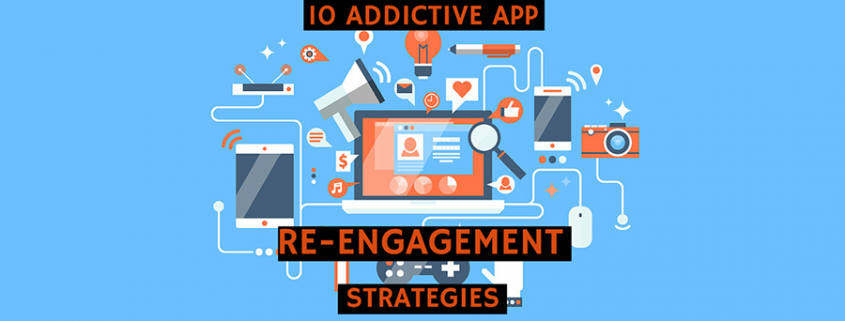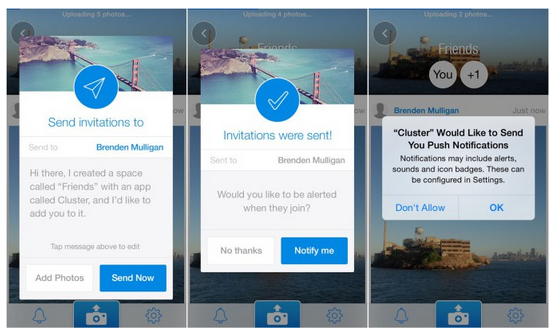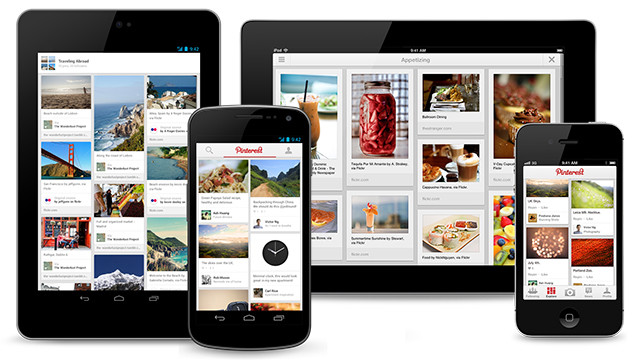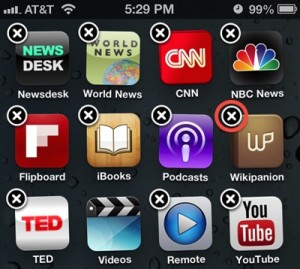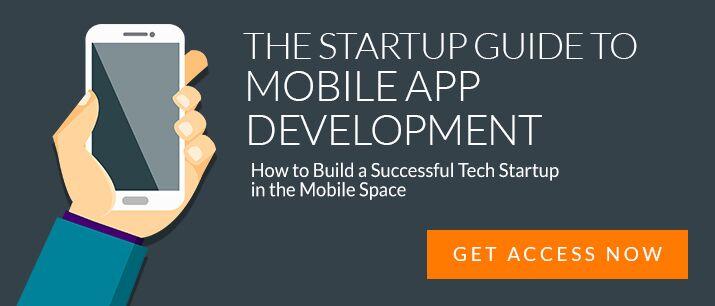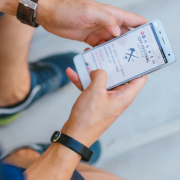10 Addictive Strategies To Re-Engage Inactive App Users
Here at Buzinga, we’ve been receiving questions from many of our clients on the topic of engagement.
Let’s get straight into it.
A great app experience is like going on an awesome first date.
You have dinner. The conversation is flowing!
You know that you want to keep in contact on a regular basis.
Slowly (or quickly) this person becomes a meaningful part of your life. Before you know it, they’ve moved in with you!
An engaging app is no different. All you want to do is keep using and engaging with it.
Slowly, the app integrates into your everyday life.
The flip-side…
A bad app that fails to engage users is like going on a bad date.
We’ve all been on one… The conversation is awful and to make matters worse, they leave you hanging when it comes time to pay the bill.
In the end, all you want to do is get out of there!
The same goes for mobile app engagement. Apps that fail to engage are like that bad date. Their users never open them again. As a result, your app is uninstalled in the blink of an eye.
So how do you turn your app into that great date? And how do you avoid your app becoming the aforementioned bad date?
Let me show you my top 10 strategies for driving continuous user engagement.
1. ‘Opt-In’ For Push Notifications
In some app categories, over 60% of users opt-in for push notifications. In others, just 20% do.
This difference is huge. Especially if push notifications are your primary method of retaining and engaging your app users.
Ride sharing apps such as Uber is the best performing category. Social media is the worst performing category.
This is partly due to the shear number of social apps around. I’m sure you can relate to how annoying and distracting it is to be constantly receiving notifications.
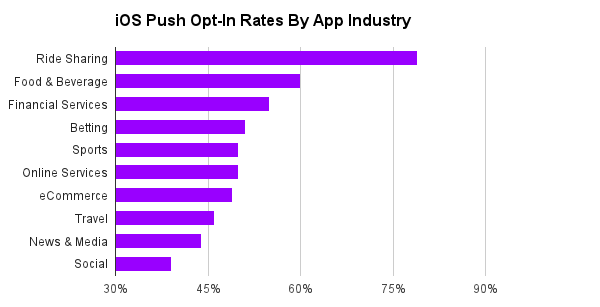 Source: Kahuna
Source: Kahuna
The data only shows the iOS operating system, as Android devices don’t ask users for push notification permissions.
Users only want to receive push notifications that are relevant and offer value.
This data shows that users have pre-conceived assumptions about the importance of notifications based on the app category.
Therefore, the apps ability to gain a users trust greatly impacts opt-ins for push notifications.
Ride sharing, Food & Beverage and Financial Service apps all have a distinct advantage. Users understand that push notifications play a vital role in the functionality of the app.
Take Uber for example. Push notifications play a vital part in the apps user experience. They let you know the exact moment that your ride has arrived.
These 3 industries all benefit from positive associations with push notifications.
On the other hand, consider Shazam. The app’s been around for quite a while now.
Shazam falls into the news and media category which is slightly above 30% in push notification opt-ins.
Whenever I hear a good song, Shazam’s my go to app for discovering the song name and artist.
I was really digging the new Justin Bieber song – ‘Where Are You Now That I Need You’ until I ‘Shazammed It’ and found it it was Justin Bieber…
The problem, is that after the apps identified a song, it always sends me notifications congratulating me on listening to an ‘awesome’ song.
Sure… This is a nice little feature but, is the notification really providing me with any value…?
No…
It just further adds to the list of push notifications which I don’t need. As such, I’ve now turned off Shazam notifications on my iPhone.
So, if your app falls into a category that suffers from low push notification opt-ins, how can you over come this?
The good news for you is that you can greatly influence user opt-in rates with the 3 following strategies:
First impressions are everything
The users experience in your app should start with an informative and clear landing page. This is an extra screen that pops up the first time a user opens your app.
This screen should promote and showcase your apps top features. It should also demonstrate the value of push notifications to your apps functionality.
When users fully understand the value of your app and how push messages will add to their experience, they are much more likely to opt-in to push notifications
Ask the question
You only get one chance at asking for push permissions. Resist the urge. Don’t ask a user to opt in when they aren’t familiar with your app.
By diverting the initial question and gauging your user’s interest, you can save your one opportunity for when the time is right.
Once your user understands the value your app provides, you have a better chance of them allowing push notifications from your app.
Cluster for example, uses this tactic to achieve a 60% push opt-in rate in the social category, with 100% of users opting for push notifications after tapping “Notify Me” in their pre-ask page.
If you follow these best practices, you should be able to improve the user experience and dramatically increase push opt-in rates.
Develop an ongoing relationship with your users
It’s critical that your respect this personalised communication channel.
Only send your users targeted and personalised push notifications that add value to their experience with your app. This will ensure that users don’t opt out or get annoyed and uninstall your app.
RELATED CONTENT: 10 Most Popular Push Notification Services
2. Make social sharing easy
Social sharing isn’t just for news and media apps. It’s a tool that can be easily utilised so users can share what their doing in your app with their social circles.
This is especially useful for users who are proud of their high score in a game. They immediately want to tell their friends about this high score.
Enabling them to share it on Facebook or Twitter allows them to instantly inform their friends.
In turn, this promotes your app for free on the various social media channels and can lead to many new downloads.
This is especially true if the person sharing their experiences is seen an an influencer within their social circles.
Social sharing should be a natural extension of your app and should aim to improve your app’s user experience.
Take lifestyle apps, for example. Social sharing enables your users to publicise personal “triumphs,” such as your progress against workout goals, travel plans, or even weight loss over time.
This enables users to keep track of their achievements and even offers public endorsement, feedback and positivity.
When sharing is made easy, your apps value is conveyed sooner which improves long-term engagement. It also prompts immediate usage.
Whilst social sharing should be immediately available to your users, it should never interfere with your apps user experience.
Ensure that social sharing is readily available in your app but make sure it doesn’t become intrusive.
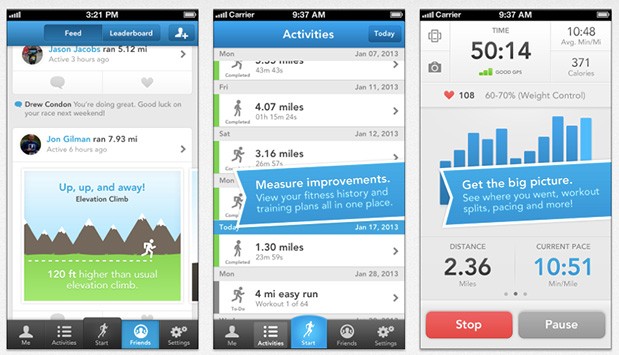 Source: Engadget
Source: Engadget
RunKeeper is currently one of the most popular fitness apps. It keeps track of your workouts.
The app gives you the ability to share your run stats across multiple channels. Their newest update has seen the implementation of an in-app social screen.
This awesome little feature lets you post and track your friends activities and photos.
How’s that for motivation?
3. Track Event-Based Interactions
When users open your app, they will complete a series of ‘actions’ or ‘events’ during their session.
These ‘actions’ can be easily tracked with app analytics.
The actions are representations of how your users interact in your app and shows which features they find most interesting or useful.
This gives you useful insight into which screens your users view most and where your users ‘convert.’
If your apps offers a shopping cart for example, you can see how your users progress through the sales funnel.
This could be a product added to the cart or a completed checkout.
You can then trigger personalised in-app messages to encourage further in-app activity.
This is a way to quickly re-engage users after they’ve completed an action and are considering exiting.
In just a few seconds, you can re-engage a user and direct it towards a customised message.
Take for example, the AFL app.
If they had ticket buying functionality and your user added 2x tickets to the Collingwood VS Carlton game at the MCG.
You could enable an in-app message alerting them to the next Collingwood VS Carlton game in round 15.
This increases the opportunity of an extra sale. We all know a ‘die-hard’ Collingwood supporter. Think how quickly they would snap up this sort of offer.
4. Use Deep Linking With Push and In-App Messages
In regards to an app, deep linking is the use of a URL to link to specific content within your app.
This link is viewable across all platforms from social media to web.
Deep linking on mobile is different to web. It’s ensures that the links viewed on a mobile device directs your user to the right screen within your app.
It shouldn’t just launch your app on the app home screen.
Using deep linking, you can direct your user through a mobile ad, in-app message or push notification to a corresponding screen within your app.
Let’s go back to our example of the AFL app.
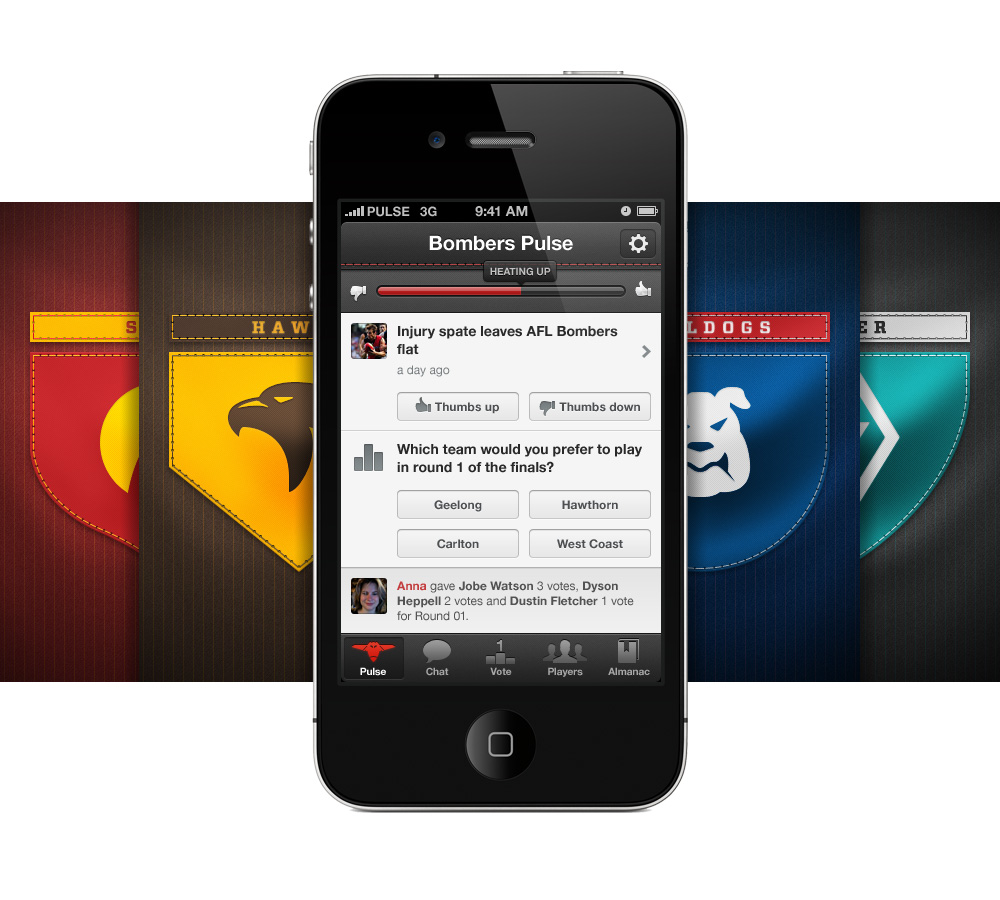 Source: AFL
Source: AFL
Collingwood have kicked 4 goals straight and have drawn level in score with Carlton.
Say the AFL app sends a highly personalised push notification to our ‘die-hard’ Collingwood supporter.
The deep link for this notification shouldn’t lead to the AFL apps home screen. This would just annoy the supporter.
The link should take our Collingwood supporter directly to the scores screen with a total breakdown of all the goal kickers.
Why is this important?
It saves the user valuable time searching for the relevant screen in your app. It engages them immediately with the subject at hand and eliminates confusing navigation.
Making the in-app path clear and easy to follow not only meets difficult user expectations, but improves the quality and conversion opportunity of your app marketing campaigns.
5. Offer Mobile Specific Rewards
I can’t count the amount of times I’ve downloaded apps to receive special offers and discounts.
If you have a segment of users that don’t use your app regularly, it could be a sign that they aren’t engaging because they’re missing ‘mobile exclusivity.’
To re-engage them, you could create a once off mobile exclusive rewards campaign or an on-going rewards based program.
Lets use some smart app marketing.
You can use push notifications to drive infrequent users back into your app with personalised discounts or membership benefits.
All push notifications should be appropriately deep linked (see above) so they lead the user to the correct screen.
The most important thing here is to properly recognise unengaged users through analytics.
Timeliness is crucial, as it could be your last chance to turn an uninterested user into a loyal consumer.
If you live in Melbourne, you’ve no doubt been to the bar Bimbo’s. They have the best $4 pizzas and great beer…
 Source: Bimbo Deluxe
Source: Bimbo Deluxe
Although it doesn’t have the greatest user interface, their app is quite cool.
It’s based on a rewards points system. It encourages users to take various actions, skillfully linking in with social media to promote a users actions in the app.
To gain rewards points for free drinks and pizzas, all you have to do is one of the following:
- Check-In
- Invite friends
- Take photos of your pizza and drinks
Whenever a user gets free drinks or pizza’s, the app posts to Facebook saying “this round’s on the app.”
This features is great for creating curiosity and driving potential curious users to download the app and visit Bimbos on Brunswick Street.
6. Remove Negative Feedback
 Source: Property Update
Source: Property Update
Hands up if you like rejection… Bet you didn’t put up your hand…
That’s because nobody likes the feeling of being rejected and it will have a negative impact on your users.
According to Psychology Today, rejection undermines your ability to pursue goals and your expectations of success.
If you look at Tinder, the app has removed all negative feedback from their unique dating process.
Think about when you don’t match with someone. If you fail to match with someone, it merely becomes an afterthought and you immediately move on to the next person.
The user experiences very little rejection throughout the app. When you think about it, this is very unusual in the dating scene.
Keep your users happy and please to improve their experiences in your app. Removing negative feedback helps keep your user in a positive mind frame.
7. Use Social Proof
 Source: Active Presence
Source: Active Presence
Group validation, also known as social proof, is the way we validate ourselves within a group of people.
If an influential blogger writes about your product or service and promotes it on social media, what do you think peoples’ reactions will be?
This blogger is an authority in their niche, and so their readers hang and act on their every word.
This is an example of social proof in marketing and the power that it holds for your application.
Other tactics of social proof include awards, ratings, reviews, sponsorship and referrals. Anything that gives your app 3rd party credibility will score well with existing users.
You only have to look at the number of downloads the top-rated apps in the app store have to see the proof! (Sorry for the pun, couldn’t resist).
8. Understand why people stop using your app
Source: No Problem Mac
If your users are currently unengaged, there’s probably a reason why.
But how do you find out what it is?
Include analytics and tracking software when developing your app to see which pages users are exiting from, how long they spend in the app, and what they are clicking on. (And so much more).
The insights you can get just from analysing user pathways are incredible.
Say you’re building a mobile game app, and you notice that a certain group of users is exiting your app after they run out of credits.
You could re-engage these users by launching a notification or mobile ad that offers them 5 free credits to keep playing.
Knowledge is power, and data is precious! Understand your users’ pain points to prevent them from dropping off.
9. Offer Personalised Content
Source: Gemalto
We live in an age where there is over supply of content.
Content that matters to your users will be personalised, targeted to their user habits, and relevant to what their goals are for using your app.
One of the most effective customer engagement methods is content that “teaches” users to to make better use of your app’s features.
This gives them a deeper understanding of your product and what they can get out of it.
If you notice from your user data that a certain group of users aren’t making use of a feature, send them a push notification, email or within-app tutorial that you think they’ll find valuable.
Imagine how valuable a demo of a new feature could be for your photo editing app, for example.
Those things are jam-packed with features that are often confusing and hard to navigate.
You notice from your data that your oldest users aren’t using the new feature that lets you re-size photos for better resolution.
Why not prompt them to complete a short tour of the feature that tells them how much time they’ll save using it, and where to find the different tools?
Most people aren’t opposed to trying new things if they can see how they will directly benefit from it, so show them what they’re missing out on!
10. Interact with users online
Source: Graphic Stock
Being active on social media isn’t just about pushing updates to your followers.
It’s about talking to customers, listening to their comments, and generally giving a human voice to your brand.
95% of Facebook posts go ignored by brands.
Stand out from competitors and make your users feel valued by replying to their comments on social media.
It should only take an hour a day to manage all your social media accounts, and it develops a relationship of trust with your followers.
This is because social media involvement demonstrates transparency, making your company seem honest. (We hope it is honest, anyway).
Ask for their opinions and feedback, and give shout outs to fans by re-tweeting or sharing their comments.
The aim is to build an army of social brand ambassadors who will share your content like crazy!
It all adds up to word of mouth and creating buzz around your app, which will in turn create new users as well as re-engaging the old ones.
You know the sales philosophy – it costs 5 times more to acquire new users than to keep the old ones.
This is low hanging fruit!
If you engage the users you already have and get them to spend more money in your app, you’re squeezing that fruit for all it’s worth.
Latest posts by Matt Murphy (see all)
- 10 Addictive Strategies To Re-Engage Inactive App Users - June 16, 2015

